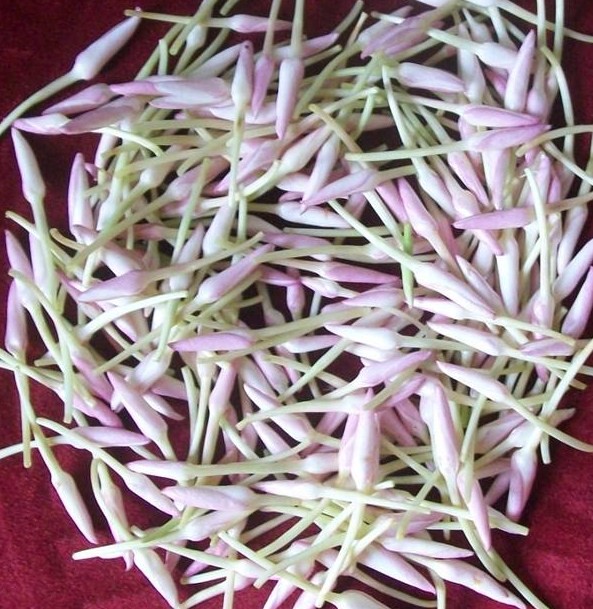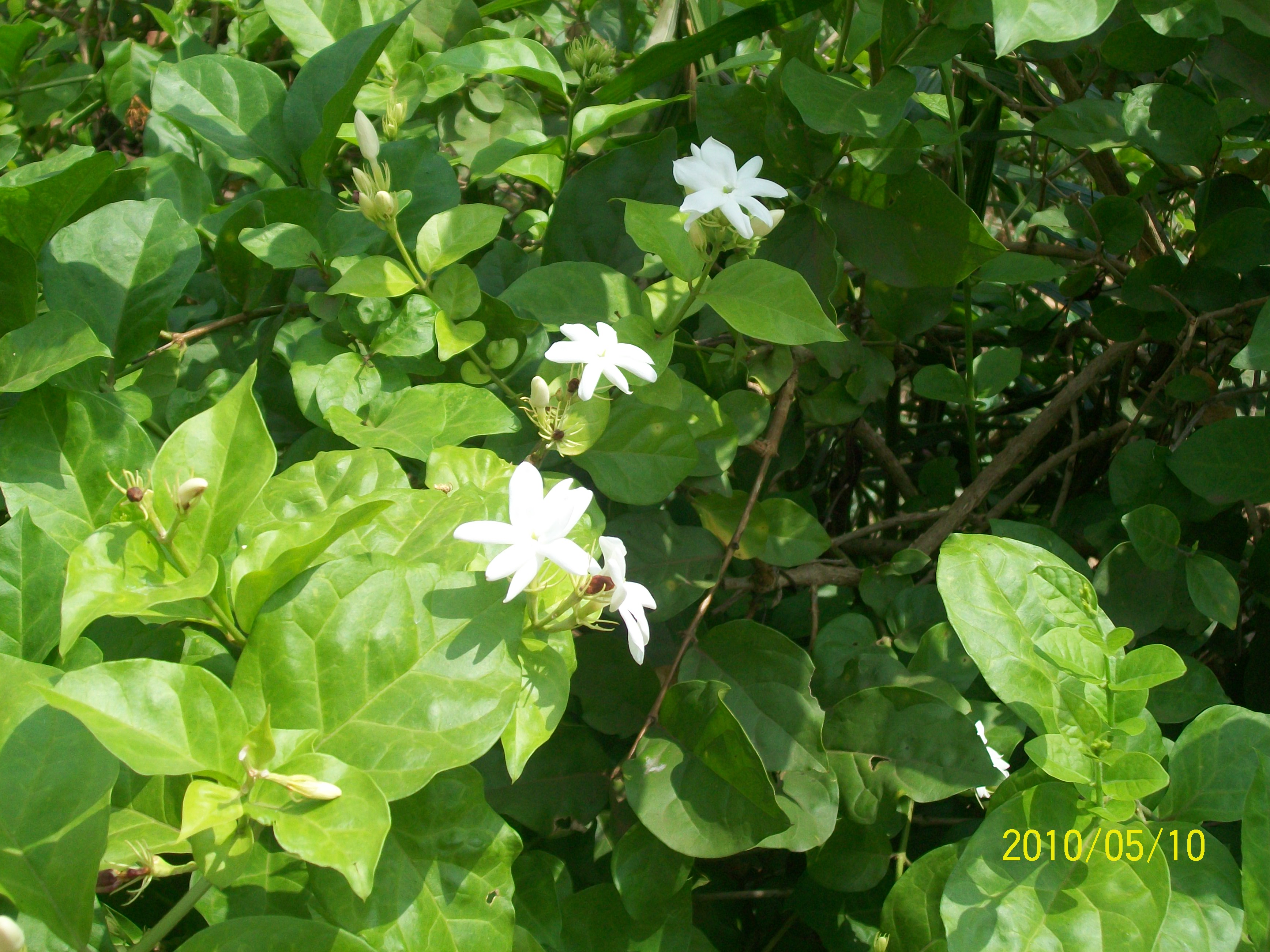
Crop: JASMINE
Scientific name : Jasminum spp.
Common / Local Name :
Jasmines constitute a group of fragrant flowers which are commercially grown in many parts of the country as dry land crop and leading states are Tamil Nadu and Karnataka. Jasmine contributes substantially to the national economy and annually more than 20 crores worth of jasmine flowers are produced and sold in India and also exported to neighbouring countries. Jasmine flowers are preferred for making special type of flower strings called veni, garlands, floral decorations, extraction of essential oil which is used in preparing high grade perfumes, colognes and flavoring the beverages etc. apart from their medicinal uses which has growing demand in India as well as in many developed countries.
Important cultivars
There are trailing, climbing, and erect growing species and cultivars. Three important species widely cultivated are Jasminum sambac , Jasminum grandiflorum and Jasminum auriculatum
Soil and climate
Jasmine can be planted on a wide range of soils. Well-drained sandy loams and red loams under tropical conditions are suitable for its cultivation. In clayey soils, there is increased vegetative growth and reduced flowering.
Propagation
Layering and cutting are the main propagation methods. Better rooting of cuttings can be obtained by planting in coarse sand and also by using any of the rooting hormones like IBA (5000 ppm), IAA (1000 ppm) and NAA (5000 ppm). Simple and compound layering methods are followed during June-July to October-November. Layers will be ready for planting within 90-120 days.
Sambac
Varieties
Gundumalli, Motia, Virupakshi, Sujimalli, Madanabanam, Ramabanam, Single Mogra, Double Mogra, Iruvatchi, Ramanathapuram local etc.
 Single mogra
Single mogra
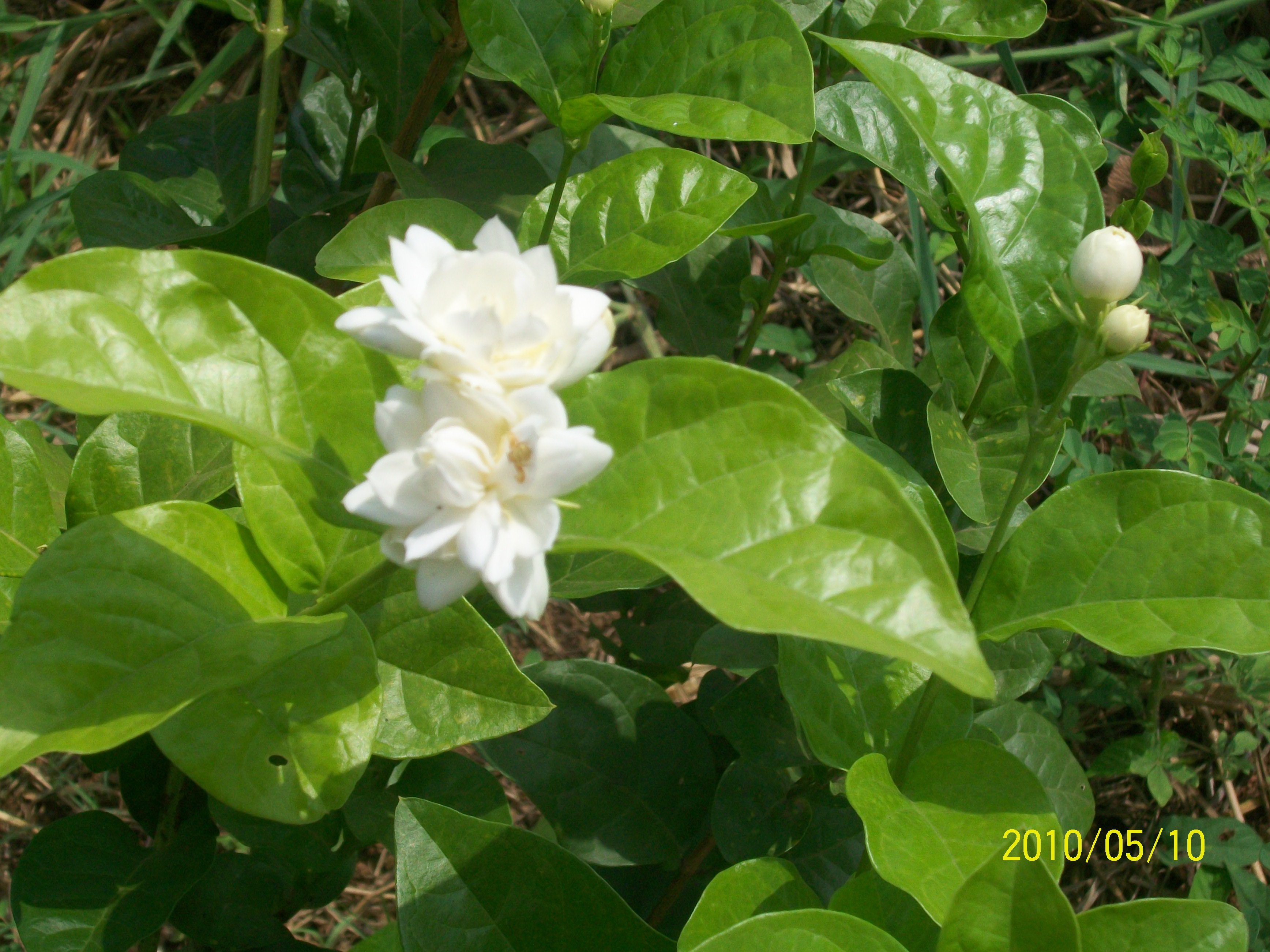 Double mogra
Double mogra
Land Preparation and planting
After ploughing the land, pits of about 30 x 30 x 30 cm size are taken and filled with topsoil and 20 kg well-rotten FYM per pit. Layers or rooted cuttings are planted in pits with a spacing of 1.25 m X 1.25 m during June to November.
Irrigation
Irrigation should be given immediately after planting followed by weekly irrigation depending upon weather conditions.
Manuring
FYM 10 kg and NPK at 60:120:120 g per plant is applied twice once after pruning and again during June - July.
Pruning
The bushes are pruned to 50 cm height from the ground level during last week of November.
Weed control
Manual weeding is effective but expensive. Use of weedicides like paraquat is also practised. Mulching also reduces weed population.
Irrigation
Constant and adequate water supply during peak flowering season is essential for high yield of flowers. After flowering is over, the water supply can be cut off. During summer, irrigate twice a week.
Season of flowering and harvest
Flowering commences in March - April. Fully developed unopened flower buds should be picked in the morning hours.
Yield
bout 5t / ha can be obtained.
Auriculatum
Varieties
Co-1, Co-2, Long Point, Long Round, Short Point, Short Round, Parimullai etc
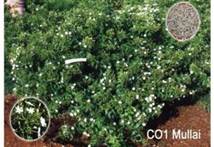
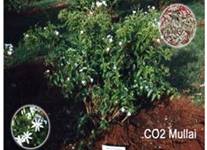
Propagation and planting
Layers or rooted cuttings are planted in 30 cm x 30 cm x 30 cm pits dug at 1.8 x 1.8 m spacing during June to November.
Manuring
FYM 10 kg/ha is applied with 120:240:120 g NPK/plant in six split doses at bimonthly intervals. The first dose is given immediately after pruning.
Pruning
The bushes are pruned to 45 cm height from ground level during the last week of January.
Season of flowering and harvest
Flowering extends from May to November. Fully developed unopened flower buds should be picked in the morning hours.
Yield
About 5,000 kg of flower buds/ha can be obtained.
Grandiflorum
Varieties
Co-1, Co-2, Thimmapuram, Lucknow etc.
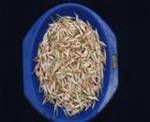 Co-1
Co-1
 Co-2
Co-2
Propagation and planting
Layers or rooted cuttings are planted at 2.0 m x 1.5 m spacing in 30 cm x 30 cm x 30 cm pits during June - November.
Manuring
FYM or compost 10 kg, NPK at 60, 120 and 120 g per plant is applied in 2 split doses in December after pruning and again in June - July.
Pruning
Pruning is done during the last week of December to 45 cm height from ground level. Season of flowering and harvest
The season starts from May to October. Fully developed unopened flower buds are picked in the morning for fresh flower trade. For oil extraction opened flowers are to be picked before 10 a.m.
Yield
Bud worm
Spray Monocrotophos 2 ml/lit to control the pest.
Blossom midge
Spray Monocrotophos 2 ml/lit or Quinalphos 2 ml/lit to control it.
Red spider mite
Spray Wettable Sulphur 50 WP @ 2 g/lit or Dicofol 2.5 ml/lit to control the mite infestation.
Leaf eating caterpillar
Leaf eating caterpillar can be controlled by spraying Quinalphos 2 ml/lit.
White ants
To control, dust Lindane to the pits before planting @ 5 g/pit
Yellowing of leaves
It is caused by 3 factors viz., iron deficiency, nematode infection and root rot disease.
Iron deficiency
It can be rectified by spraying Ferrous sulphate 5 g/lit at monthly intervals until the chlorotic symptoms disappear.
Nematode
Initially test the soil for nematode infection. Apply 10 g of Temik granules near root zone and then irrigate the field.
Root rot
Drench the soil around the plant with Copper oxychloride at 2.5 g/lit.
Leaf spot
Spraying of Mancozeb at 2 g/lit. from the onset of monsoon at monthly intervals will control the disease occurrence.
Input availability |
Address/Contact details |
| Plants | ICAR farm/ State Govt Farms |
Fertilizers |
For detailed list kindly click here |
Pesticides |
For detailed list kindly click here |
| Machineries | Goa Bagayatdar Stores |
|
